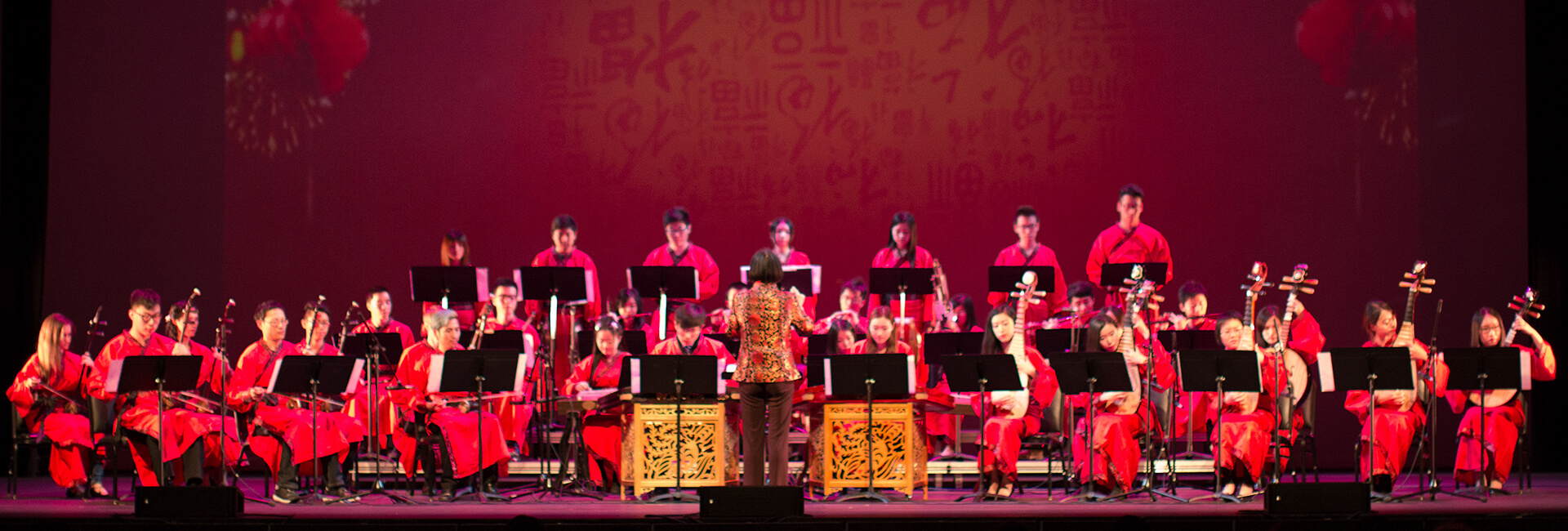The UCLA Chinese Music Ensemble, directed by Chi Li, performs its annual Winter concert featuring traditional and contemporary music, including Chinese opera aria, zheng unison, qin unison, folk dance, and silk-and-bamboo music.
Introduction to Chinese instruments used in this performance:
- Di - a transverse bamboo flute with six finger holes, a mouth hole, and a hole covered by a thin bamboo membrane that gives the instrument a wavering, poignant sound. More than 160 bone flutes of this type dating back 7000 years have surfaced in China's Hemudu site.
- Qin - an un-bridged seven-stringed zither with over 3000 years of history. There are more than 3,600 known ancient qin compositions collected in nearly 130 qin manuscripts. Other than regular notes, it has 119 playable harmonics.
- Sheng - an ancient mouth organ with 17 or 21 bamboo pipes, each with a reed fitted on its lower end, inserted into a copper base. This instrument dates back to about 3000 years.
- Ruan - an early Chinese plucked lute having a round body and a long fretted neck with four strings, which are plucked with a plectrum. This instrument dates back to about 2100 years.
- Erhu - a two-string lute with the horsehair of the bow held in between the two strings. Examples of this instrument exist dating back to about 1000 years.
- Pipa - a pear-shaped plucked lute with four strings. It has four upper frets and twenty-four lower frets. The pipa is plucked with five real or synthetic nails of the right-hand fingers.
- Zheng - a long bridged zither with varying sizes and twenty-one strings plucked with real or synthetic nails.
